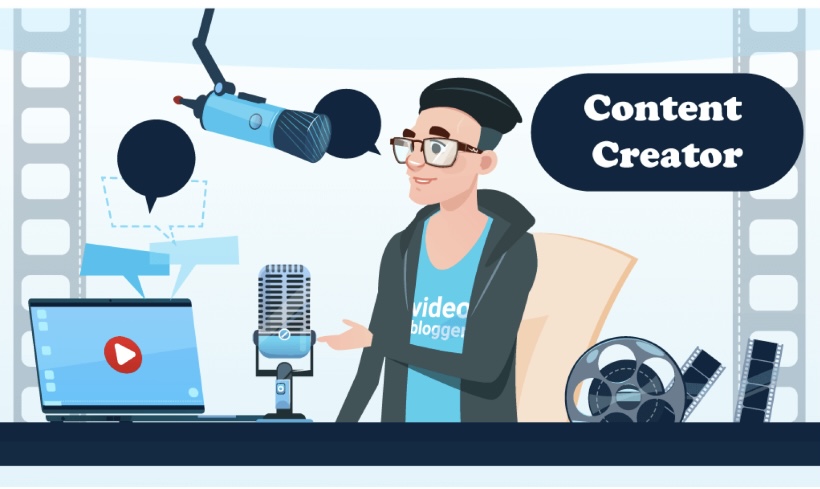In today’s interconnected world, content creators have unprecedented opportunities to reach global audiences. However, language barriers often hinder the dissemination of content across different regions. Video translators have emerged as essential tools, enabling creators to adapt their content for diverse linguistic audiences. This article explores how video translators empower content creators in a global market, enhancing accessibility, engagement, and reach.
Understanding Video Translators
Video translators are tools or software applications that convert the spoken language in videos into multiple languages through subtitles, voiceovers, or dubbing. They utilize technologies such as speech recognition, machine translation, and natural language processing to facilitate accurate and efficient translations. By integrating these tools, content creators can make their videos accessible to non-native speakers, thereby broadening their audience base.
For instance, a video translator can automatically translate spoken content, helping creators reach new demographics and offering audiences content in their native languages.
Enhancing Accessibility and Engagement
One of the primary benefits of video translators is the enhancement of accessibility. By providing subtitles or dubbing in various languages, creators ensure that viewers who do not understand the original language can still engage with the content. This inclusivity not only broadens the audience but also fosters a sense of connection among diverse viewers.
Moreover, video translators contribute to increased engagement. Viewers are more likely to watch and share videos available in their native language, a key benefit for any content creator looking to grow their online presence. This personalized experience encourages longer viewing times and higher interaction rates, which are crucial metrics for content creators aiming to expand their platforms.
Expanding Reach in the Global Market
In a global market, reaching audiences across different regions is vital for content creators. Video translators facilitate this by enabling the localization of content. Localization involves adapting content to meet the cultural and linguistic preferences of a target audience. By translating videos into multiple languages, creators can tailor their content to resonate with viewers from various cultural backgrounds, thereby expanding their reach.
For instance, a content creator producing educational videos can use a video translator to provide subtitles or voiceovers in languages such as Spanish, French, or Mandarin. This adaptation makes the content accessible to students worldwide, enhancing the creator’s influence and subscriber base. By making use of video apps with translation capabilities, creators can further streamline the localization process, enabling them to publish content for multiple regions faster than ever.
Cost-Effective Content Adaptation
Traditionally, adapting video content for different languages required significant resources, including hiring professional translators and voice actors. Video translators offer a cost-effective alternative by automating much of the translation process. Advanced tools can generate accurate translations and even synthetic voiceovers, reducing the need for extensive human intervention.
This efficiency allows content creators, especially those with limited budgets, to diversify their content offerings without incurring prohibitive costs. By investing in a reliable video translator, creators can produce multilingual content at a fraction of the traditional expense, making global outreach more attainable.
Improving SEO and Discoverability
Utilizing video translators can also enhance a content creator’s search engine optimization (SEO) efforts. Search engines index subtitles and transcripts, making translated content more discoverable to users searching in different languages. By providing multilingual subtitles, creators increase the likelihood of their videos appearing in search results across various regions, thereby attracting a broader audience.
Additionally, translated content can be shared on multiple platforms catering to different linguistic groups. This distribution strategy amplifies the content’s visibility and fosters organic growth through shares and recommendations within diverse communities. For instance, many video apps offer translation support, enabling content to be easily accessible and discoverable on global platforms, as seen in leading video apps.
Leveraging AI-Powered Video Translators
The advent of artificial intelligence (AI) has revolutionized video translation. AI-powered video translators offer advanced features such as real-time translation, context-aware language processing, and voice synthesis that closely mimics human speech. These capabilities result in more accurate and natural translations, enhancing the viewer’s experience.
For example, AI-driven platforms can analyze the context of the spoken content to provide translations that preserve the original meaning and tone. This contextual understanding is particularly beneficial for content that relies heavily on nuances, such as humor or idiomatic expressions. By integrating an advanced video translator, creators ensure their content is not only translated but also culturally relevant.
Integrating Video Translators with Content Creation Tools
Modern content creation platforms often integrate video translation features, streamlining the workflow for creators. These integrations allow creators to produce, edit, and translate their videos within a single platform, enhancing efficiency and consistency.
For instance, some video apps offer built-in translation tools that enable creators to add subtitles or voiceovers in multiple languages directly during the editing process. This seamless integration reduces the time and effort required to produce multilingual content, allowing creators to focus on quality and creativity.
Challenges and Considerations
While video translators offer numerous benefits, creators should be mindful of potential challenges. Automated translations may not always capture cultural nuances or context accurately, leading to misunderstandings. Therefore, it is advisable to review and, if necessary, edit translations to ensure they convey the intended message appropriately.
Additionally, creators should consider the cultural sensitivities of their target audiences. Localization is not merely about language translation but also involves adapting content to align with cultural norms and values. By paying attention to these aspects, creators can build trust and credibility with diverse audiences.
Conclusion
Video translators are indispensable tools for content creators aiming to thrive in a global market. They enhance accessibility, engagement, and reach by breaking down language barriers and facilitating content localization. By leveraging advanced video translation tools, creators can produce cost-effective, multilingual content that resonates with diverse audiences, thereby expanding their influence and success in the digital landscape.

